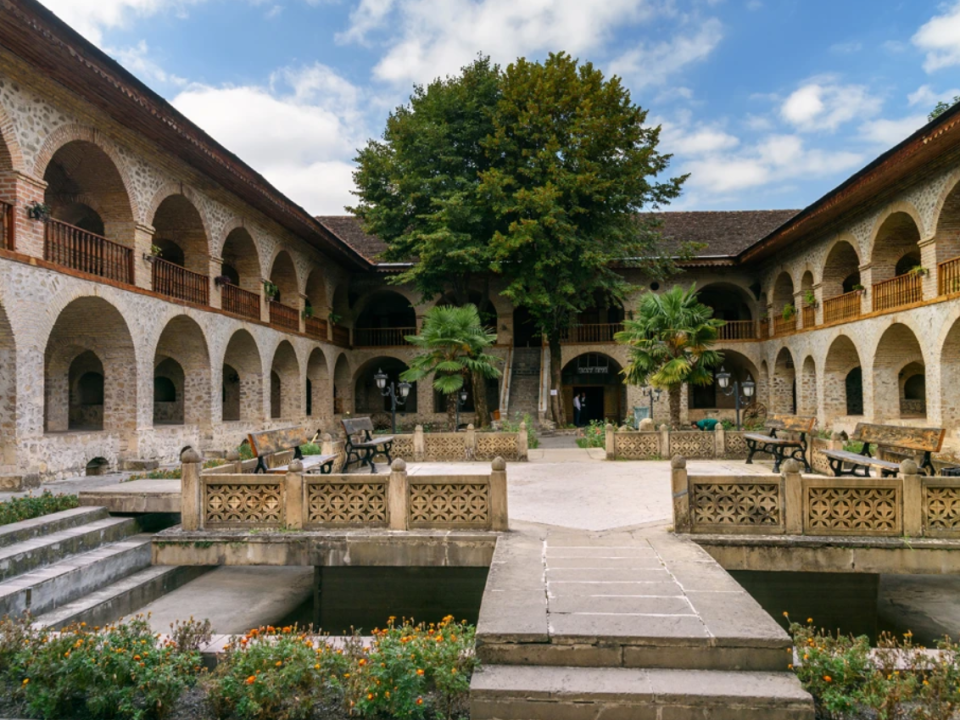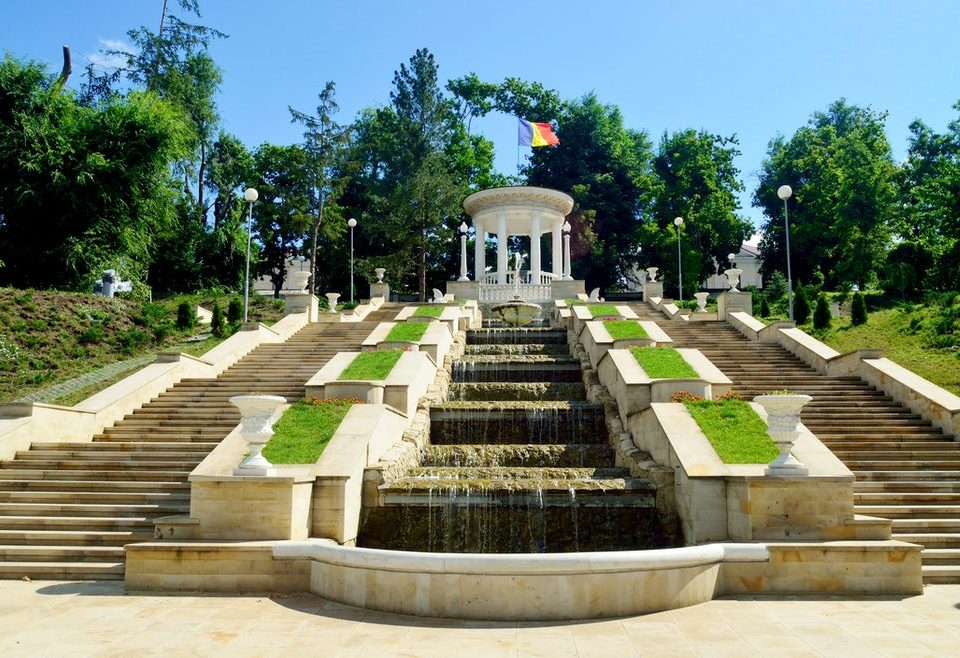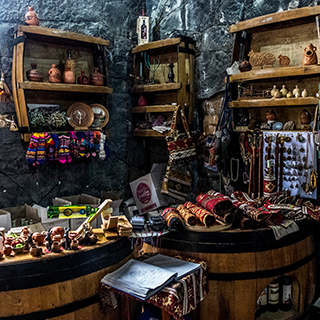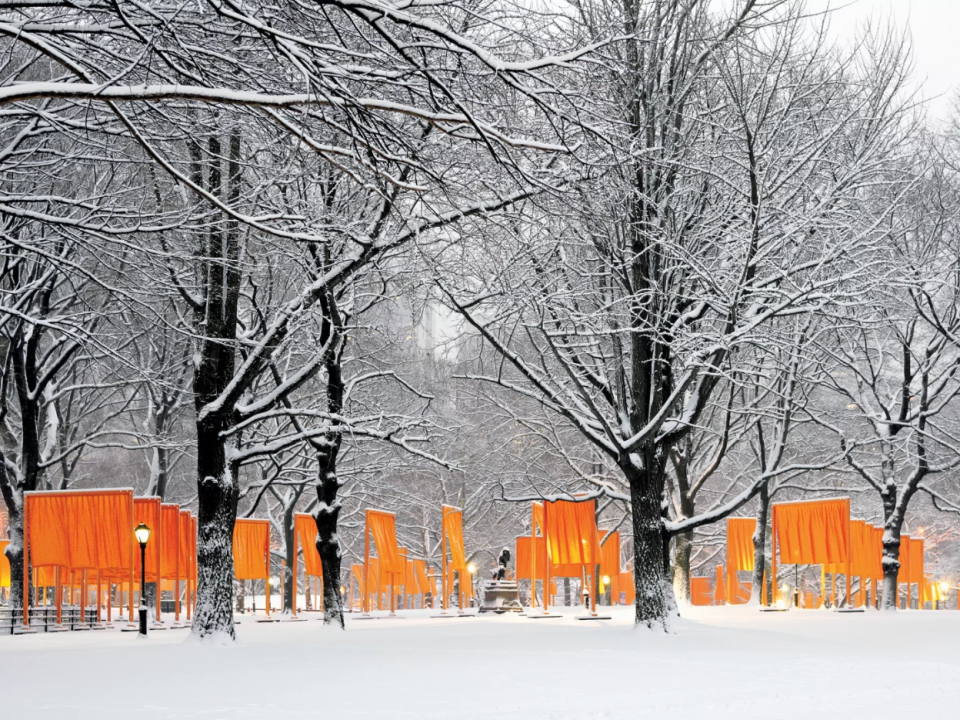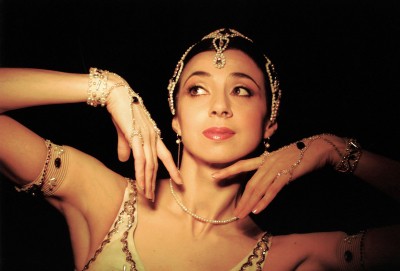- Date
- November 18, 2021
Maznik is a traditional pastry, which consists of dough pulled into paper-thin sheets. Before rolling them into long and coiled sausage-like rolls, the sheets are topped with oil and a filling of choice. As for a savory filling, you can choose cheese, eggs, spinach leaves, or minced meat, while grated apples or pumpkin are the usual ingredients for a sweet one. Maznik’s top is typically brushed with oil and sprinkled with water before baking. Once the pie is ready, it is sprinkled with water and covered with a towel to remain soft. It is usually enjoyed with a glass of yogurt, a fresh vegetable salad, a homemade tomato sauce or sour milk. This popular pastry is usually cooked for festive occasions, such as name days, and in some regions, including Bitola and Ohrid, a special ‘’vasilicharski maznik’’ with a hidden coin is made for the traditional holiday Vasilica (St Basil the Great).- Date
- November 18, 2021
Sheki Khan’s Palace is the most important 18th -century structure in Azerbaijan and a unique architectural monument of the khanate period. It was built in the late 18th century as the ruling Sheki Khan’s summer residence in the northeast of the historic city of Sheki, in the foothills of the Caucasus Mountains. The city itself was an important destination on the Great Silk Road, the ancient web of trade routes linking the East and West. Both the Palace and a number of merchant homes show the wealth gained by silkworm farming and the commerce in silk cocoons from China in the late 18th to the 19th centuries. The two-story palace includes spectacular details both inside and out, and its front is covered in artwork depicting hunting and combat themes, as well as sophisticated geometrical and botanical designs. Furthermore, what makes the Sheki Khan Palace unique is the 5,000 wooden and glass details of ‘’Shebeke’’ (there is a large stained-glass window consisting of multi-colored glass mosaics sitting in the center and other smaller windows covered with stone lattices and colorful glass). Azerbaijan craftsmen are famous for this technique of filling wooden lattices with thousands of pieces of colored glass fitted together without glue or nails. In 2019, the Historic Centre of Sheki and the Khan’s Palace were added to UNESCO’s World Heritage List of cultural sites.- Date
- November 18, 2021
Chisinau, the capital of Moldova, has many beautiful parks. Locals and tourists can visit them and enjoy taking a stroll. So, let’s see some of the most impressive parks of the city: Stefan cel Mare Park is the oldest park in Moldova, created at the beginning of the 19th century, and it was named after the ruler Stefan the Great. Its two special features are the huge water fountain and the Alley of Classics, an alley decorated with busts of classic literary figures and political leaders from Moldova. Valea Morilor Park is usually mentioned as Komsomolsky Lake due to the big lake in the middle of it. It is interesting that a small beach is located there. Moreover, there are natural springs (the most known is the ‘’Tamara’s Spring’’) and an impressive waterfall staircase that lights up at night. In 2009, Moldavian archaeologists discovered the fragments of a mammoth skeleton at the bottom of an old lake in the park. Valea Trandafirilor Park or the Rose Valley is a garden, located in the Botanica District of Chisinau, and has three lakes which constitute an ideal choice for picnics and boat tours. It was opened in early 1968, on a hillside which is cultivated with roses, and has paths around the water. At the edge of the park, there is the Memorial of Chernobyl Victims.- Date
- November 17, 2021
Armenia’s wine heritage is long. However, it wasn’t until recently that the depth of Armenia’s wine history was understood. In 2010, an archaeological team working in one of Vayots Dzor’s many caves unearthed ancient karas, clay urns, which contained forensic evidence of wine production dating back 6,000 years. These finds in what is now known as the Areni-1 Cave, are widely believed to be the oldest known evidence of wine production anywhere in the world. Vayots Dzor has a primary role in wine cultivation. As a result of intense seismic activity, the volcanic soil creates a perfect foundation for Armenia’s vineyards, rich with basalt, tuff, and obsidian. Steep gorges create fast flowing rivers keeping the soil irrigated. So, this region is a unique choice for wine-tourism. Along the Vayots Dzor Wine Route, there are plenty of wineries, such as the Areni Wine Factory and the Hin Areni Winery, and vineyards, and visitors can experience the tradition of winemaking and the winetasting. Moreover, every autumn Wine Festival is organized celebrating Armenian wine production, enjoying local foods and joining traditional dances.- Date
- November 17, 2021
Ukrainian churches are heavily influenced by Byzantine architecture. During the past centuries, many Byzantine architects and artists visited the country in order to contribute to the creation of Christian structures. St. Sophia Cathedral, Holy Wisdom of God Cathedral, in Kyiv is an outstanding example of these artworks. It was created in the 11th century and is the most ancient Christian church that is fully preserved in the East Slavic area having the biggest preserved collection of mosaics and frescoes of that period. The Cathedral’s architecture is distinguished by supplementary naves added to the five-nave core and pyramidal spatial composition of the cross dome church. Its decoration composes an ensemble unique for its conceptual design that reflects the major theological ideas of the time and the huge Pantheon of Christian Saints depicted in the Cathedral has an unrivalled multiplicity among Byzantine monuments of that time. Furthermore, St Sophia and Related Monastic Buildings, Kyiv-Pechersk Lavra, are inscribed on the List of World Heritage Sites by UNESCO.- Date
- November 17, 2021
Christo Vladimirov Javacheff was a Bulgarian contemporary artist who is known for his large-scale environmental artworks. He created these site-specific art installations with his partner and wife Jeanne-Claude Denat and they were also known as ‘’Christo and Jeanne-Claude’’. They were noted for wrapping iconic landmarks in fabric, such as the Pont Neuf in Paris and the Reichstag in Berlin, and temporarily altering land and cityscapes, such as the 11 islands in Miami's Biscayne Bay. Christo and Jeanne-Claude’s work has been considered controversial. However, they insisted that the only purpose of their projects was ‘’joy and beauty’’. Moreover, many of the installations took decades to be prepared. For example, ‘’The Floating Piers" project on Italy's Lake Iseo was realized in 2016 (7 years after Jeanne-Claude’s death), although she and Christo imagined this work of art in 1970. Recently (from September 18 to October 3, 2021) the project ‘’L’Arc de Triomphe, Wrapped’’ was on view. It is the first artwork which was realized after Christo’s death in 2020.- Date
- November 16, 2021
Nino Ananiashvili is a Georgian ballerina (former Principal Ballerina at the Bolshoi Theatre in Moscow) and artistic director of the State Ballet of Georgia. The Daily Telegraph has described her as one of the twelve greatest ballerinas of all time, mentioning her ‘’alluring grace, enticing mystique, personal magic, instinctive expressiveness and technical wizardry’’. In 2002, she was named as the Best Ballerina of the Year by the US Dance Magazine and she has received many awards. Ananiashvili’s performances, such as the Swan Lake, Don Quixote and Giselle, have been unforgettable for the public. She has also participated in many movies, such as the comedy “The House Which ran from the Window’’. In 2019, Nino Ananiashvili was named as Honorary President of the “Europa Nostra Georgia’’ with the aim of contributing to this citizens’ movement of cultural and natural heritage protection. Now, the Tbilisi Ballet has undergone a major refurbishment thanks to her inspiration.- Date
- November 16, 2021
Mămăligă is Romanian corn porridge and one of the most popular traditional foods in the country. It is often confused with polenta. In the past, this dish of boiled cornmeal was mostly cooked by peasants, often instead of bread. They would prepare it in a round-bottomed kettle known as ceaun, and after it cooled down and hardened, the porridge would get sliced with a piece of string. Mămăligă is often topped with butter, sour cream or cascaval cheese. Another version of serving this porridge includes crushing it in a bowl of hot milk. Nowadays, this simple and rural meal can also be found in modern and upscale restaurants.- Date
- November 16, 2021
The National Museum in Belgrade was founded by a decree of the Minister of Education Jovan Sterija Popovic on May 10, 1844 as ‘’Serbian Museum (Muzeum serbski) whose purpose was to collect antiquities in one place and to safeguard them for posterity’’. It is the largest and oldest museum in Serbia and the façade of the building is characterized by the Neo-Renaissance style. In the first decades, its role was both the protection of art and the conduction of scientific research. It was also organized as an educational institution that constituted the national identity. The museum’s collections include over 400.000 remarkable archaeological, historical, numismatic and art masterpieces from prehistoric times to late medieval period and contemporary works. The Vinca statues (6th-5th millennium B.C.), King Radoslav's coins (13th century) and paintings of Paja Jovanovic (19th century) are only some examples. The last few decades, the National Museum has rich exhibiting and publishing activity as well as diverse programs for the public with new technologies in a prominent place.


